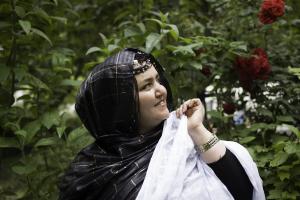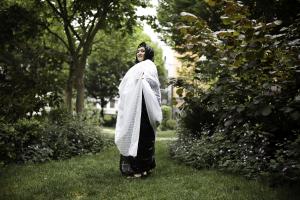Dighya MOHAMMED SALEM
Singer
Dighya received a creation grant in partnership with the Atelier des Artistes en Exil.
What is your artistic background ?
I was born in February 1966, and raised among refugees in Dajla, Western Sahara, I am a Sahraoui singer who sings in the local Hassania language alongside Arabic. I sing to spread awareness about the plight of my country and my sense of love and belonging to it, I sing to address the social injustice and discrimination that the country is suffocating under and to promote the rights of women in Western Sahara and its regions. My start as a singer was in 1987 in the refugee camps for Western Saharan citizens in Algeria. After that, I worked with some local groups until I ended up joining the National Orchestra of Western Sahara where I had the opportunity to work with some of the leading and most famous singers of the country like Mariam Alhassan and Mahfood a’aleieen. I recorded my first CD with them here in Paris.
How do you see your profession today ?
The musical scene today is ultimately massive and diverse. As I consider myself an intergenerational singer, who has lived in both generations, I feel there is a need to create and innovate new sorts of music, back then we were accustomed to limited local music genres. Now we can see that there are many mixed modern music genres, such as reggae, which I can utilize to improve and enhance my style of music to follow the trends of contemporary music.
How do you see yourself in five years ? In 10 years ?
I hope to channel the voice of the people of Western Sahara and to show to the world that there are people in my country who, with all the pain and constraints, are able to provide top-quality music. I would like to spread the culture of Western Sahara (specially Hassaneia). I also hope that I will be able, with my band, to raise our position to an international level, so that we can have our own tours around the world. Finally, I hope to use our voices and musical instruments to spread justice and equality as ambassadors of peace and harmony in our world.
This interview was conducted in 2019
Photo credit: Amandine Besacier


